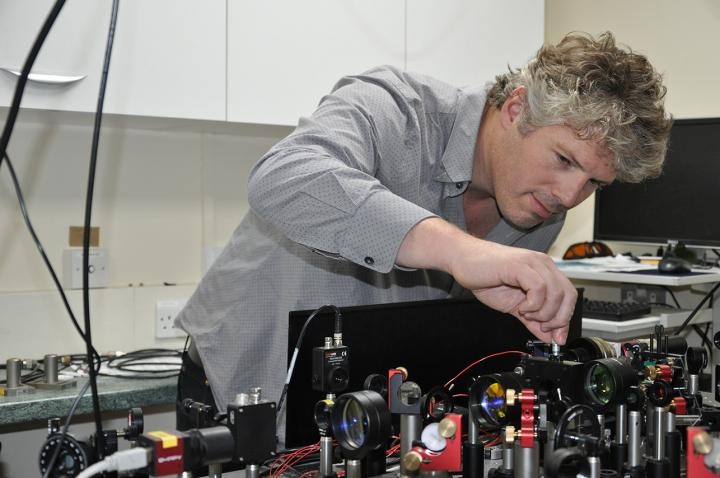Oct 24 2016
 This is Professor Otto Muskens. (Credit- University of Southampton)
This is Professor Otto Muskens. (Credit- University of Southampton)
A team of researchers, led by the University of Southampton, have built a fast nanoscale optical transistor using gold nanoantenna assisted phase transition.
The details of this research work have been published in the journal Light, Science and Applications, and creates potential for new directions in antenna-assisted optical memory and switches.
Small nanostructures that are capable of interacting strongly with light are of interest for numerous emerging applications including metasurface flat optics and small optical circuits.
Nanoantennas are built to have strong optical resonances where energy is concentrated much below the diffraction limit, the minimum scale possible using traditional optics. Such intense concentration of light can be applied to boost all kinds of effects linked to localized energy conversion and harvesting, producing new frequencies of light through nonlinear optics, and coupling light to quantum dots and small molecules.
In addition to precisely tuning these antennas by design, the capacity to actively tune their properties draws a lot of interest.
If we are able to actively tune a nanoantenna using an electrical or optical signal, we could achieve transistor-type switches for light with nanometer-scale footprint for data communication. Such active devices could also be used to tune the antenna's light-concentration effects leading to new applications in switchable and tuneable antenna-assisted processes.
Professor Otto Muskens, University of Southampton
The research team used the antenna’s properties itself to accomplish low energy optical switching of a phase-change material. Vanadium dioxide was the selected material to attain this effect.
Vanadium dioxide is a special material with properties that can be switched from an insulator to a metal by raising the temperature above the phase transition point (68°C). It is challenging to fabricate this material. A research team at the University of Salford produced the material as they specialize in thin-film deposition and are capable of growing superior quality films of this material.
Gold nanoantennas were fabricated over this thin film and were used to locally stimulate the phase transition of the vanadium dioxide.
The nanoantenna assists the phase transition of the vanadium dioxide by locally concentrating energy near the tips of the antenna. It is like a lightning-rod effect. These positions are also where the antenna resonances are the most sensitive to local perturbations. Antenna-assisted switching thus results a large effect while requiring only a small amount of energy.
Professor Otto Muskens, University of Southampton
A team from the University of the Basque Country in San Sebastian, Spain, performed the theoretical modeling.
Their comprehensive calculations showed that the nanoantennas enabled a new pathway by local absorption around the antenna. The antenna-assisted mechanism brought about a much lower switching energy compared to the VO2 film, corresponding to picojoule energies and a calculated efficiency of more than 40%.